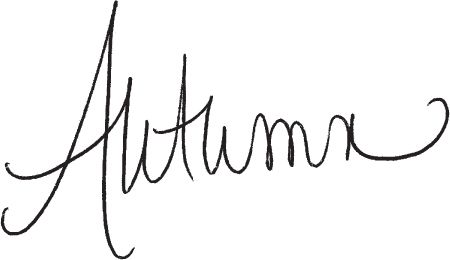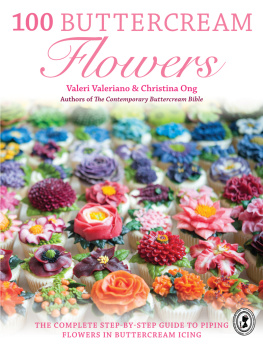
Copyright 2014 Creative Publishing international, Inc.
All rights reserved. No part of this work covered by the copyrights hereon may be reproduced or used in any form or by any meansgraphic, electronic, or mechanical, including photocopying, recording, or taping of information on storage and retrieval systemswithout the written permission of the publisher. However, the publisher grants to the purchaser of this book permission to reproduce the templates in the book for personal use.
Due to differing conditions, materials, and skill levels, the publisher and various manufacturers disclaim any liability for unsatisfactory results or injury due to improper use of tools, materials, or information in this publication.
First published in the United States of America by Creative Publishing international, Inc., a member of Quayside Publishing Group
400 First Avenue North
Suite 400
Minneapolis, MN 55401
1-800-328-3895
www.creativepub.com
Visit www.Craftside.Typepad.com for a behind-the-scenes peek at our crafty world!
Digital edition published in 2014
Digital edition: 978-1-62788-003-9
Softcover edition: 978-1-58923-791-9
Library of Congress Cataloging-in-Publication Data available
Copy Editor: Kari Cornell
Proofreader: Karen Levy
Book and Cover Design: Kim Winscher
Page Layout: Laurie Young
Cover Layout: Creative Publishing international, Inc.
Photographs: Autumn Carpenter and Brand Photodesign
The Complete Photo Guide to
CANDY MAKING

CONTENTS
Whether you are making candy for your family, for a party, or for gift giving, there are sure to be recipes to please. Candy making is an art and a science project. It can be easy, but there are steps and techniques that must be followed for success. If you are a beginning candy maker, this book will serve as a step-by-step course in candy making. If you are an experienced or advanced candy maker, use this book to try new recipes and pick up some new tips.
This book is divided into several sections. This first section covers the tools, ingredients, and basic information you will need to know before you begin. The sections that follow each focus on a type of candy and contain various recipes, step-by-step technique instruction, and full-color photographs. Tips and troubleshooting are provided throughout to ensure picture-perfect and delicious candy. Refer to the handy glossary on when you encounter an unfamiliar word or phrase.
Some candies are quick and simple, while other candies, especially those that require a thermometer, are a little trickier. If the candy doesnt turn out the first time, do not be discouraged or disappointed, as it takes time to master some of the recipes. I remember the first time I made caramel. It had dark chunks and did not set up properly. I knew the caramel could be made to perfection because my grandma and mother had been using the same recipe for years! I did not become discouraged and I tried again. My caramel came out perfectly on my next attempt.
Candy making is in my blood. I have been around candy makers since the day I was born. Many of the recipes in this book are the originals that have been handed down from my grandmother and mother. Other recipes have been modified and modernized. While it would not be possible to write a book that has every candy recipe in the world, this book covers the most common and my favorites that are tested, tried, and true. I hope you enjoy the book and this collection of recipes; most of all, I hope you find new favorites to pass down to your family for generations to come.

Basics
This section covers all the basic information that youll need to know before you begin candy making, including necessary ingredients, tools, how to work with chocolate (including melting and molding), cooked candy basics, and much more.
Before starting any recipe, it is important to prepare your kitchen and gather the ingredients. Read through each recipe thoroughly before you begin to make sure you understand the process. Measure all the ingredients and have them ready before you begin. Any tools and equipment, such as a lined pan or sprayed candy mold, should also be prepped and ready before you start. When you are making candy, it is important to stay focused and avoid doing too many things at once. In many recipes, timing is crucial. Walking away for even a minute or two, for example, can cause caramel to turn from a beautiful golden caramel to a burnt blackened mess.
INGREDIENTS
The quality of your candy depends on quality of the ingredients you use. For example, if the nuts are not roasted and fresh, your finished candy will be unpleasant. High-quality ingredients produce high-quality finished candies. Always check the shelf best-by date. This book contains recipes with dozens of ingredients. This section provides tips for shopping for common ingredients and describes less common ingredients that may not be found in your local grocery store. Most of these ingredients can be purchased at candy supply shops.
Sugar
Sugar is the basis of nearly every recipe in this book. Do not change the type of sugar called for in a recipe. For example, if the recipe calls for granulated sugar, do not substitute with powdered (confectioners) sugar. The texture and mouthfeel of the candy will be very different. If brown sugar is used in the recipe, choose light brown sugar. Dark brown sugar may be substituted, but the candy will have a more intense molasses flavor.
Dairy Products
There are a wide variety of dairy products. When using dairy in candy making, do not substitute any ingredients. For example, if the recipe calls for heavy whipping cream, do not substitute half-and-half. Nothing else can give the rich texture and flavor of heavy whipping cream. Always use unsalted butter and never substitute margarine for butter.
Nuts
The quality of nuts will vary. Always use nuts that are fresh. Store unused nuts in the freezer in an airtight container. Taste the nut before adding the nut to the recipe. If the recipe calls for adding the nuts while the candy is cooking on the stove, the nuts will cook as well. Otherwise, toasting nuts before adding them to the recipe will improve the flavor of finished candies. To toast nuts, place the nuts in a single layer on a baking sheet lined with parchment paper. Place them in a 300F (150C) oven for approximately 15 minutes, stirring every 3 minutes. When finished, the nuts should have darkened in color. When cool, they should have a roasted flavor and be slightly crisper than before they were toasted.
Cocoa Powder
Cocoa powder is an unsweetened powder used in many candy recipes. Dutch-processed cocoa is cocoa powder that has been treated with an alkali to prevent the cocoa from having sour flavor notes. Dutch-processed cocoa has a different flavor than regular cocoa powder. My favorite is E. Guittard Cocoa Rouge Dutch-processed cocoa.











